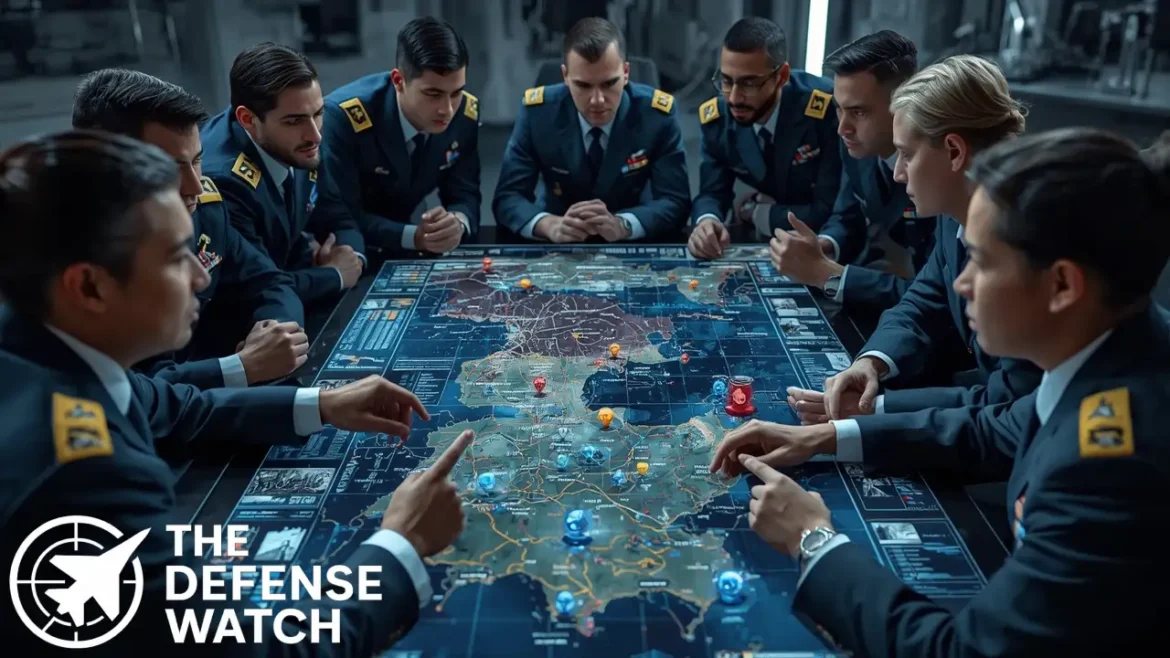Red Team Military Wargaming Best Practices
Military wargaming has long been a cornerstone of strategic planning, training, and operational readiness. Among its most critical components is the Red Team—a group tasked with representing adversary forces, tactics, and decision-making. By adopting an opposing perspective, Red Teams provide commanders with insights into vulnerabilities, overlooked assumptions, and potential outcomes of conflict scenarios.
As modern threats evolve, from great power competition to cyber warfare and hybrid tactics, Red Team wargaming best practices are increasingly central to military preparedness. Defense organizations worldwide are refining their methodologies to ensure simulations mirror the complexity of real-world conflicts.
The Role of Red Teams in Wargaming
Red Teams act as the “thinking adversary” within a wargame. Their mission is not to simply oppose for opposition’s sake but to realistically challenge assumptions, doctrines, and operational plans.
Best practices emphasize:
- Realism in adversary doctrine: Red Teams should study and apply authentic enemy strategies, technologies, and decision-making styles.
- Integration of multi-domain threats: From cyber intrusions to space-based disruptions, Red Teams need to incorporate the full spectrum of warfare.
- Adaptive mindset: Rather than being bound to scripted moves, Red Teams should dynamically adjust to Blue Team actions, as real adversaries would.
Best Practices for Effective Red Team Wargaming
1. Grounding in Intelligence
Red Teams must be informed by the latest intelligence assessments. This ensures their actions reflect the adversary’s actual capabilities and intentions, not outdated or biased assumptions. (Source)
2. Diversity of Perspectives
Effective Red Teams include not just military professionals but also experts in cyber, economics, geopolitics, and culture. This multidisciplinary approach broadens the scope of challenges presented during the wargame.
3. Psychological and Cognitive Realism
Wargames should account for how adversary leaders think and make decisions—factoring ideology, risk tolerance, and political constraints into simulated behavior.
4. Integration Across Scales
From tactical engagements to strategic scenarios, Red Teams must stress-test assumptions at every level. A localized cyberattack or drone strike may cascade into broader operational effects, which wargames should capture.
5. Post-Wargame Analysis
After-action reviews are essential. Red Team insights often reveal systemic weaknesses or flawed assumptions that can reshape doctrine, procurement, and training.
Why Wargaming Matters in 2025
With rising tensions in the Indo-Pacific, renewed great power rivalry, and rapid advances in artificial intelligence and unmanned systems, wargaming is more relevant than ever. Exercises involving peer adversaries like China and Russia require nuanced Red Teaming to ensure forces are prepared for contested environments.
The U.S. Department of Defense, NATO, and allies in Asia-Pacific are investing heavily in next-generation wargaming, incorporating AI-driven simulations and digital twins of battlefields. Red Team practices are evolving to keep pace, ensuring adversaries are portrayed not just as static threats but as adaptive, technologically sophisticated actors.
Analysis: Beyond Simulatio
While Red Team wargaming has proven indispensable, experts caution that simulations must be balanced with live exercises and real-world testing. Overreliance on digital or conceptual wargames risks missing unexpected human or cultural variables that shape conflict outcomes.
For defense planners, the key lies in integrating Red Team insights into procurement, training, and doctrine development, ensuring lessons learned translate into operational advantage.
FAQs
Red Team wargaming is a military exercise where one side plays the role of an adversary to test and challenge friendly strategies.
It helps identify vulnerabilities, stress-test plans, and anticipate enemy tactics more realistically.
No. Red Teaming is also applied in cybersecurity, corporate strategy, and intelligence analysis.
AI, cyber tools, and digital simulations allow Red Teams to model more complex scenarios and adaptive adversary behaviors.
The U.S., NATO, and major Indo-Pacific powers such as Japan, India, and Australia are investing heavily in advanced wargaming techniques.


4 comments
[…] has unveiled the AbramsX technology demonstrator, a lighter, hybrid-electric concept tank that may shape the future of U.S. armored forces. AbramsX […]
[…] capabilities and operational context. We’ll also provide expert analysis of how this evolution shapes future air-combat […]
[…] the question remains: how many high-end missiles can it afford to supply — and how will that shape the future of deep-strike capability and deterrence in the 21st […]
[…] Infiltration: With the facility’s electronic defenses neutralized, the second ODA team conducted a military free-fall (MFF) parachute jump, then marched approximately seven miles to reach the target. The […]